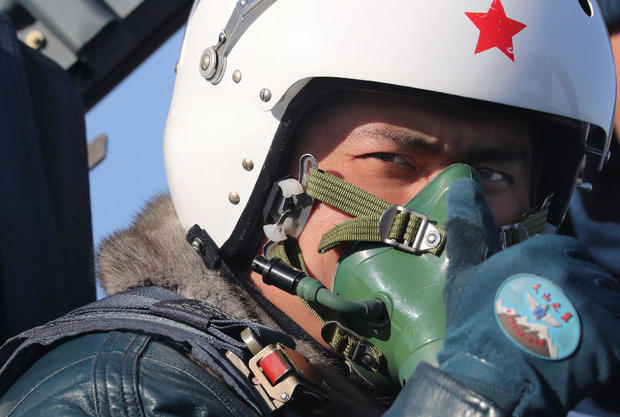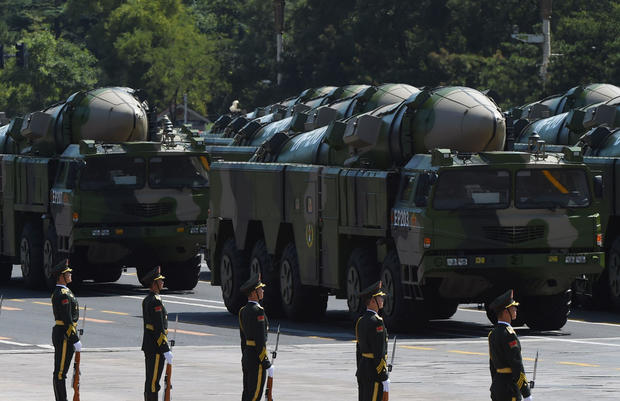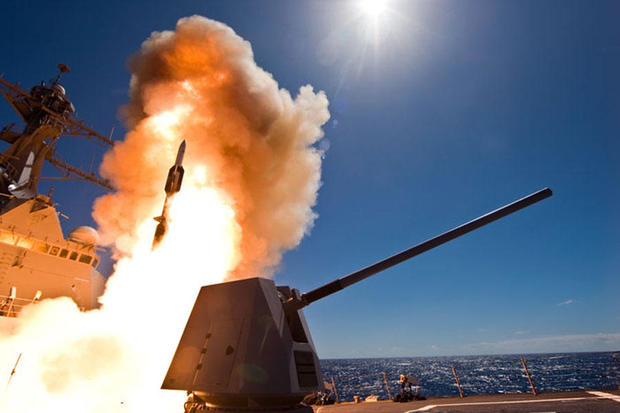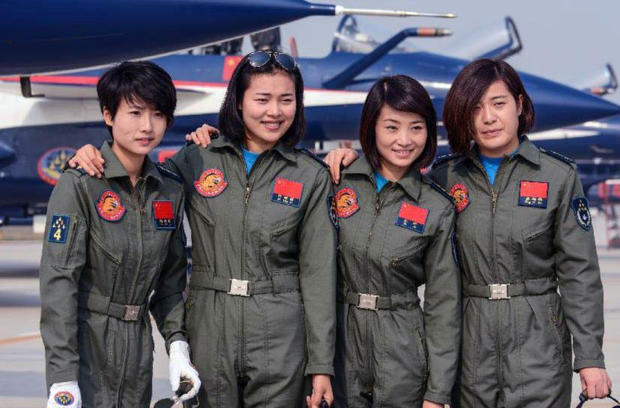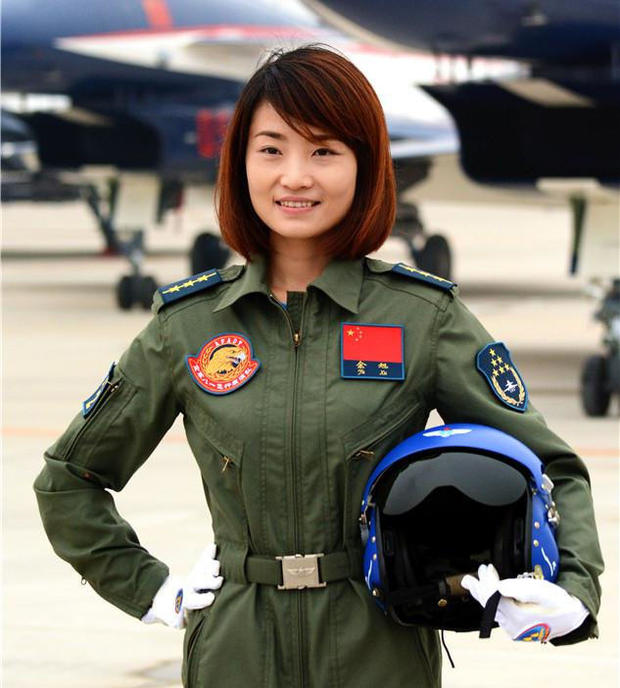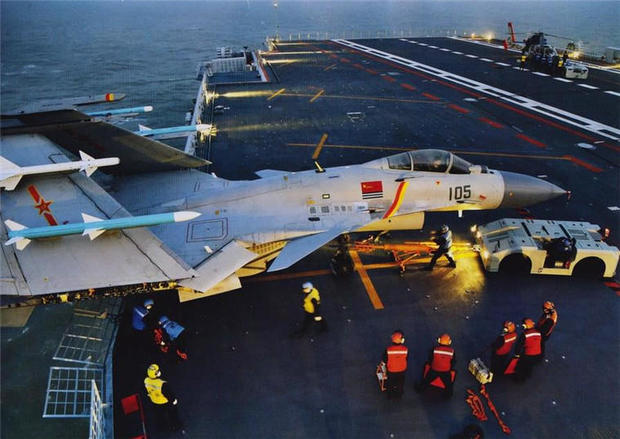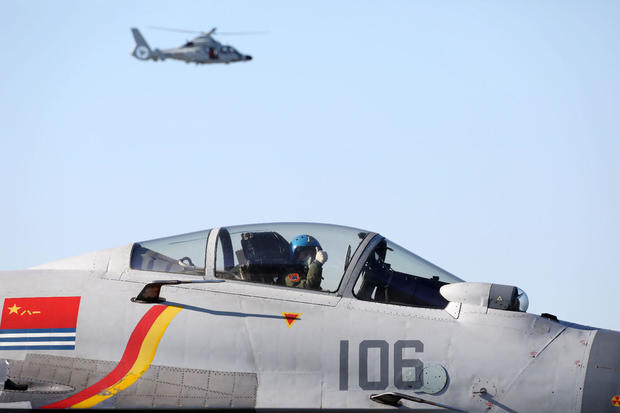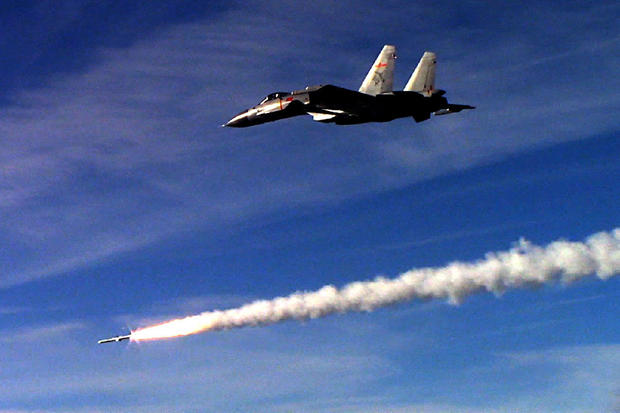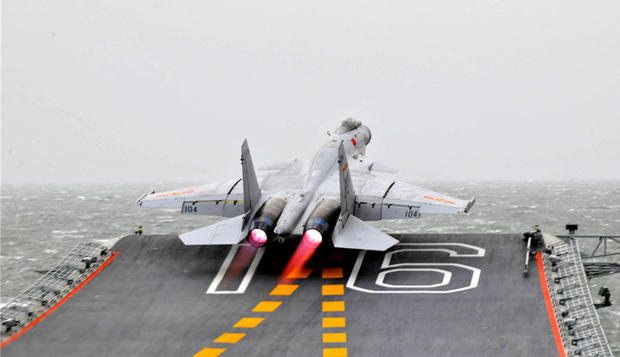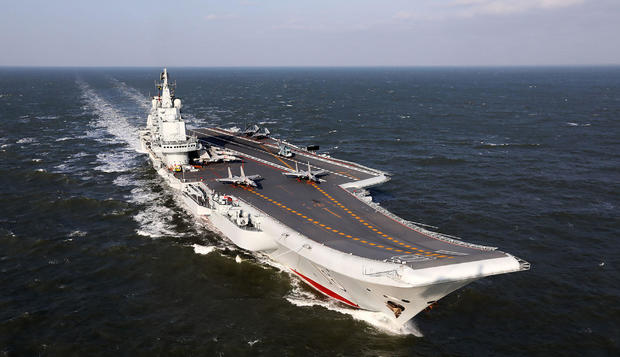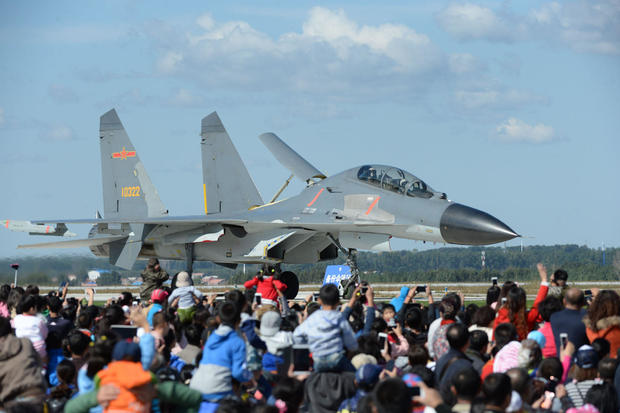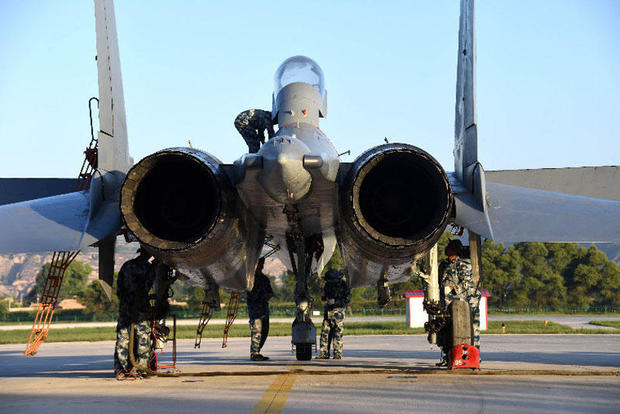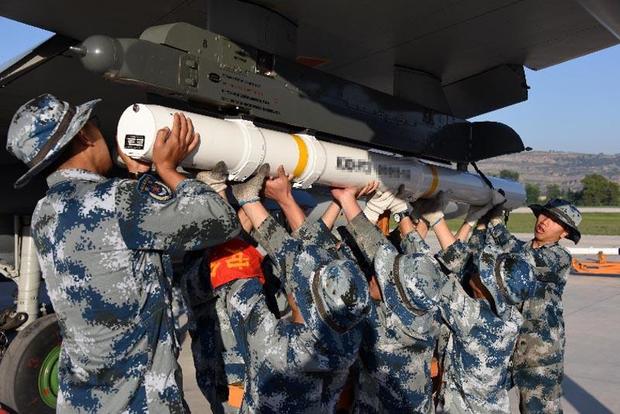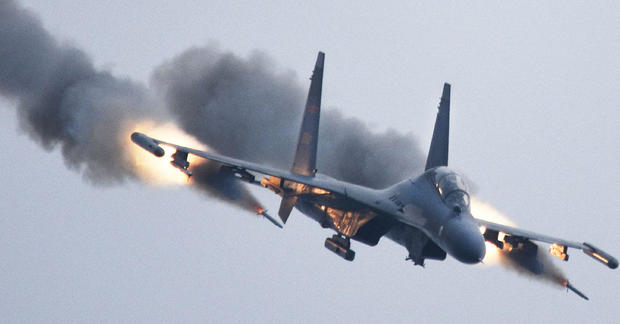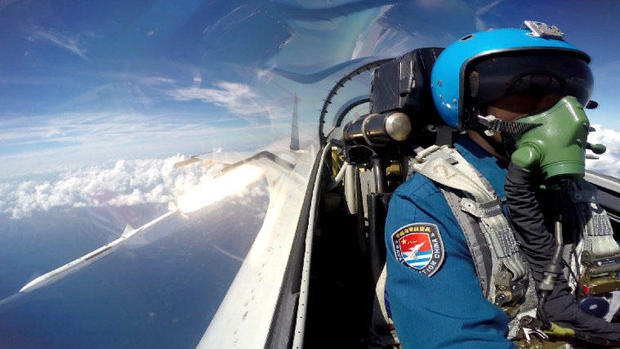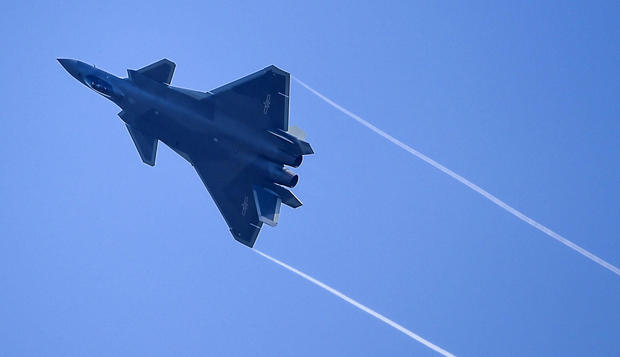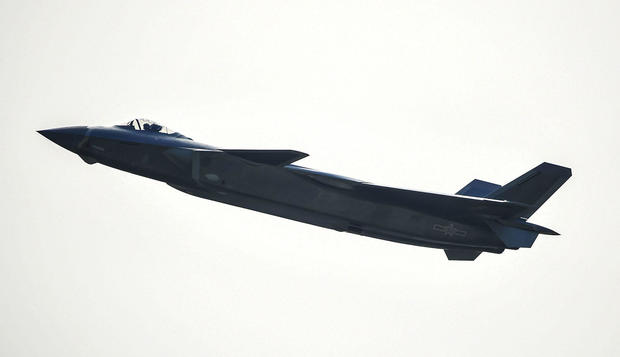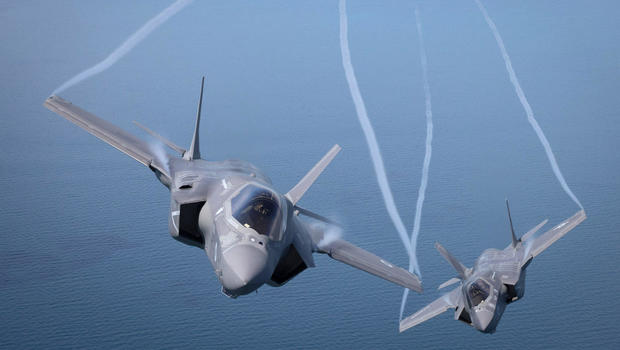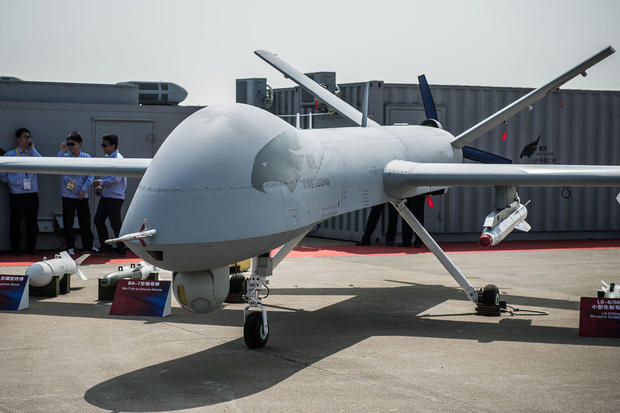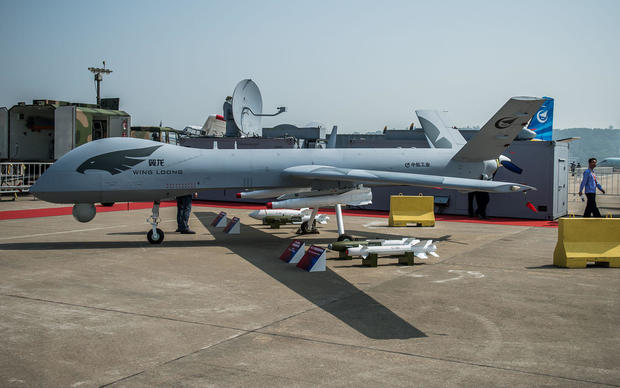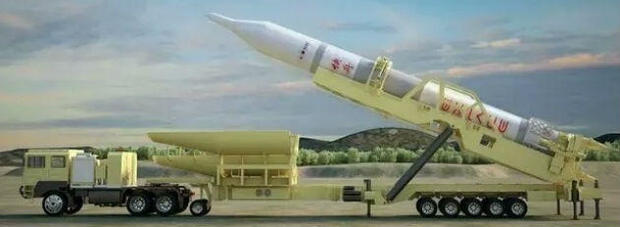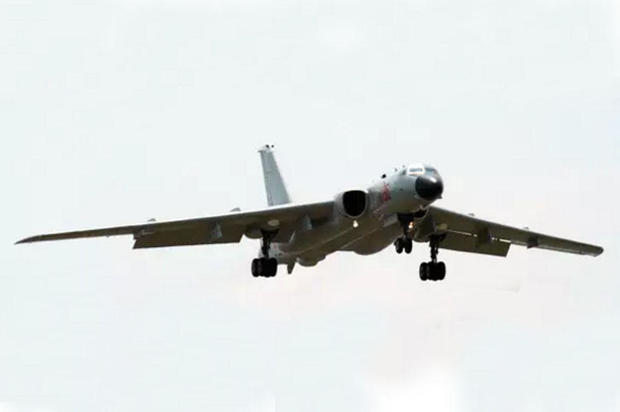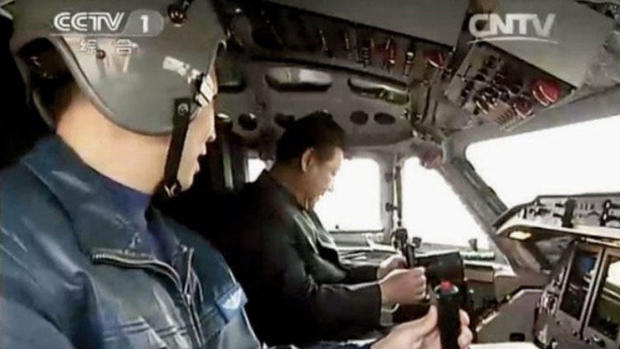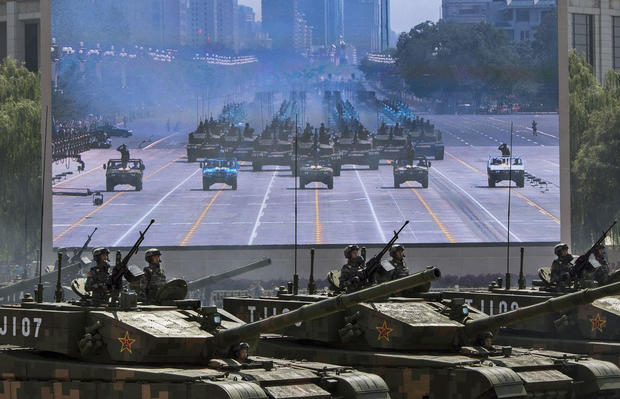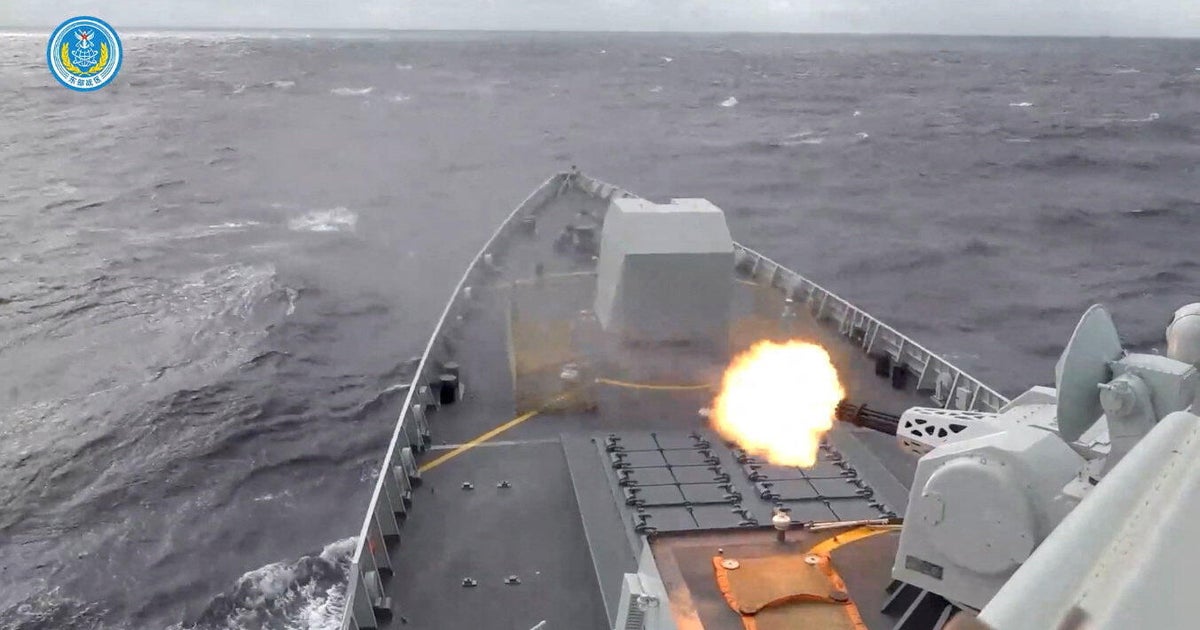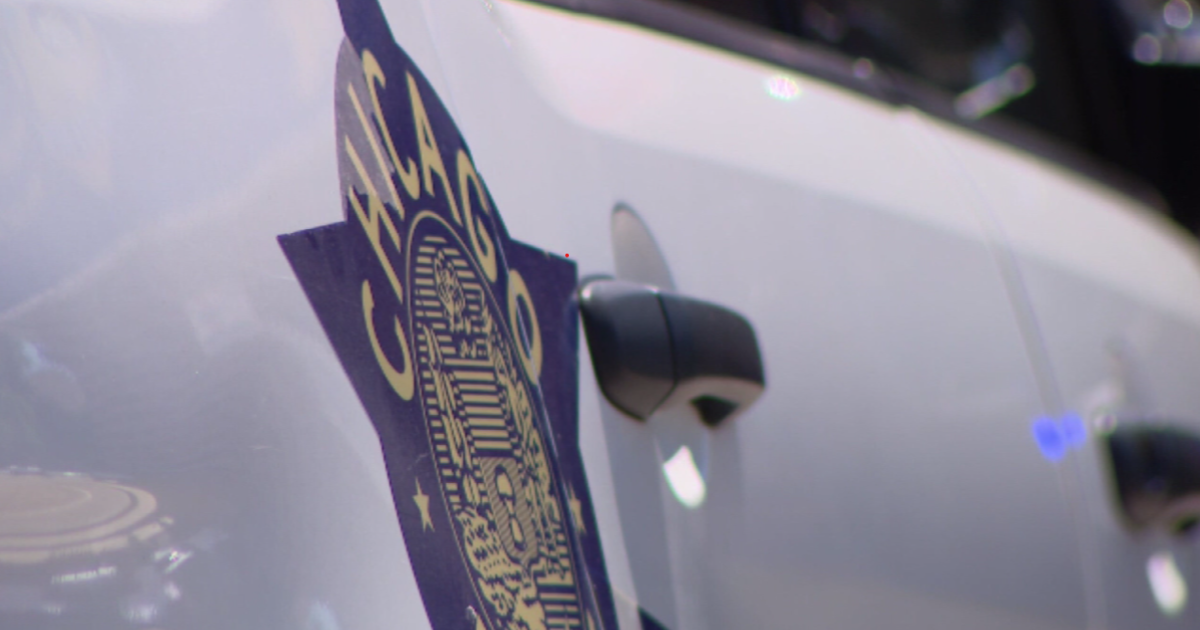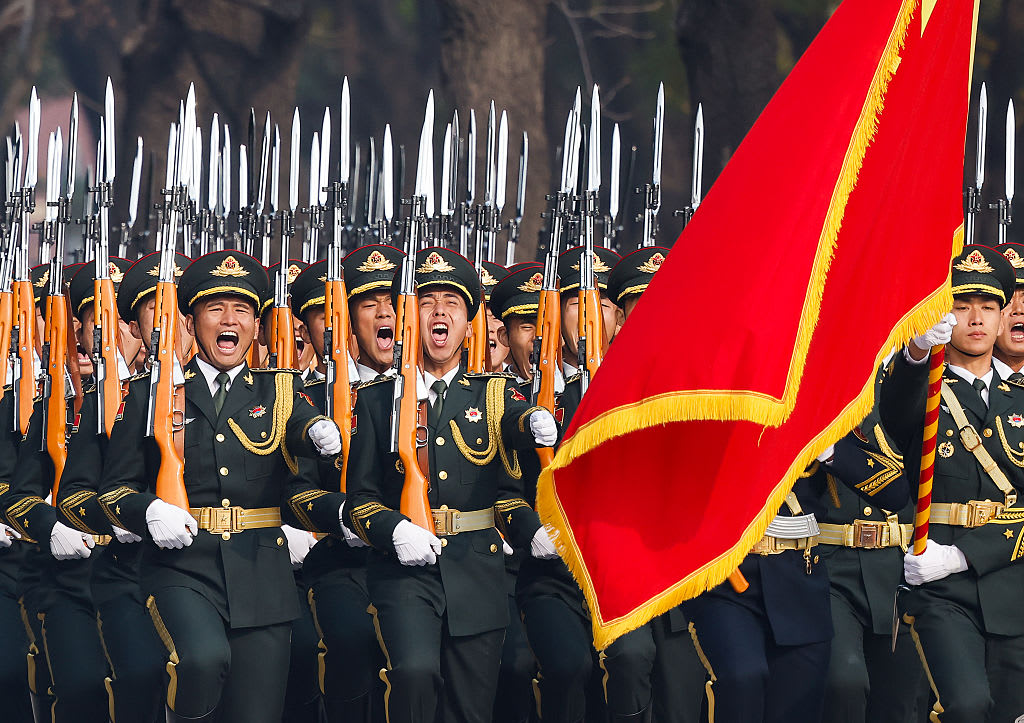China's newest weapons of war
Once reliant on the Soviet Union for its arsenal, China has been making big investments to modernize its forces and become a bigger player on the international scene.
The country's defense budget, now $145 billion, is at a record high. Here are some of the newest and most notable weapons in the Chinese military.
China's "East Wind"
According to the U.S. Naval Institute, China's Dong Feng 21 (DF-21D) missile, seen here in a 2015 military parade, is a "carrier killer." The anti-ship ballistic missile -- said to be the world's first -- has an estimated top speed of Mach 10, with a maximum range of 1,250 miles.
It's designed to take out an entire U.S. aircraft carrier in one strike.
The DF-21D on parade
Though the DF-21D is a fearsome weapon on paper, the U.S. military remains unconvinced that the missile can to live up to its promise.
"It's not clear whether China has the capability to collect accurate targeting information and pass it to launch platforms in time for successful strikes in sea areas beyond the first island chain ... that runs from Japan to the Philippines," the Department of Defense wrote in an annual report.
The U.S. Navy's defense against the DF-21D
This, meanwhile, is the U.S. response to China's DF-21D missile: The SM-6 extended range missile, fired here by the USS Dewey.
The SM-6 was successfully tested by the U.S. Navy in December 2016 against a target representative of the DF-21D. China's tests of its own missile, meanwhile, have yet to prove its ability to hit mobile targets at sea.
J-31: The new Chinese stealth fighter
First unveiled to the public as a 1/4-scale model at the China International Aviation and Aerospace Exhibition 2012, the Shenyang J-31 (or Falcon Hawk) is China's shot at a fifth-generation stealth jet fighter. It's expected to enter service in 2018 or 2019.
The J-31 is billed as a competitor to the U.S. F-35 Lightning II. It is likely that a version of the J-31 will be sold to countries prohibited from purchasing an F-35.
An underwhelming stealth plane
The J-31 is believed to use stealth coatings to evade radar. The plane can carry both air-to-air and air-to-ground missiles externally and four munitions internally.
Observers were underwhelmed with the plane's 2014 flying debut, at least in comparison to the highly advanced F-35 Lightning II. Reuben Johnson of Aviation International News said, "The aircraft bleeds too much energy and the pilot had a hard time keeping the nose up during turns and other maneuvers. He also had to engage afterburners far too often to maintain a proper energy utilization curve."
China's first female pilots
China's air force recruited its first 35 female trainee pilots in July 2005. Less than half graduated in 2009, and only four of those recruits were trained to fly China's third-generation J-10 fighter.
The four, shown here, ultimately joined the August 1st Air Demonstration Team, China's answer to the U.S. Navy's Blue Angels.
Yu Xu, China's hero pilot
On November 14, 2016, Yu Xu, the first woman to fly a Chinese J-10, reportedly was killed in a training accident when her jet collided with another.
Xu ejected but was struck and killed by the wing of another plane. The other plane was able to land safely.
China's carrier-based J-15 jet
The Shenyang J-15 is China's first-ever domestic-built fighter jet, designed for its first-ever domestic-designed aircraft carrier. It made its first takeoff in May 2010.
All's well aboard the J-15
Here, a J-15 pilot gives a thumbs up while on the deck of the aircraft carrier Liaoning. The ship, along with others, participated in a live-fire drill in the Bohai Sea in December 2016.
J-15 missile
The J-15 can, in theory, carry 12 air-to-air missiles at once.
Military analysts, however, say that this underpowered plane can only carry four missiles when fully fueled, while the plane's range is limited to just under 75 miles.
This plane needs a little boost
Though China brags about the J-15's capabilities, saying its performance rises to the level of the U.S. F/A-18 Super Hornet, there are several key drawbacks.
Most notably, the J-15 can't take off without a ski-jump ramp. It's also limited to two tons' worth of weapons.
Meet China's first aircraft carrier
The J-15 was developed for use with the Liaoning, China's first-ever aircraft carrier. Commissioned in September 2012, it carries a crew of 1,960.
Unlike the nuclear-powered Nimitz-class carriers used by the U.S., the Liaoning is powered by steam turbines and diesel engines.
Born in the USSR
The Liaoning was first laid down as the Riga in the former USSR in 1985. Construction halted when the Soviet Union collapsed; the rusted remains of the ship were purchased at auction in 1998 for $20 million.
After years of retrofitting, the People's Liberation Army Navy officially commissioned the ship as the Liaoning in September 2012.
The U.S. Navy takes a goodwill tour
Here, Chinese Navy Lieutenant Wang Yuan (second from the left) gives a delegation from the U.S. Navy a tour of the Liaoning in October 2015.
The goodwill visit was a part of the annual U.S.-China navy exchange program that includes discussions on training, medical support and other topics of mutual interest.
Women sailors in secure quarters
In March 2010, the Chinese navy launched its first female sailor training team. Today, the Liaoning is home to roughly 100 female personnel, all of whom live in a private dorm secured by a fingerprint sensor.
J-11B: A copycat plane?
China originally licensed the plans for the Shenyang J-11, its fourth-generation fighter jet, from Russia. As such, it's a carbon copy of the Sukhoi Su-27SK. But sometime in the 2000s, China stopped using Russia-sourced avionics and weapons, switching to domestic tech instead -- an act Russia says is a violation of the countries' secretive arms contract.
This upgraded plane, renamed J-11B, can be seen here at the bi-annual Changchun airshow in China's Jilin province.
This is one fast (and expensive) jet plane
Each J-11B costs China about $30 million to build. The plane has has a top speed of Mach 2.35 (1,550 mph), and can climb as fast as 60,000 feet per minute.
J-11: "Flanker B-plus"
Coded "Flanker B-plus" by NATO, the J-11 is meant to be a direct competitor to the U.S. Air Force's F-15 Eagle and F-16 Fighting Falcon fighters.
Here, the People Liberation Army's Western Theater Command readies a J-11 jet as part of their training.
This jet fires Chinese and Russian missiles
Crew members load an air-to-air missile onto a J-11 jet during a training exercise in July 2016.
The J-11 carries infrared-homing and radar-guided air-to-air missiles, sourced both domestically and from Russia.
J-11 on the attack
Each J-11B can carry up to 10 missiles. It's also armed with a 30mm autocannon that fires 1,500 rounds per minute.
A live-fire training exercise
A J-11 fighter pilot fires an air-to-surface missile at a simulated target in the South China Sea during a live-fire training exercise in July 2016.
VT-4 MBT: China's high-tech tank
The third-generation VT-4 main battle tank, yet to enter mass production, has two key advantages over competing tanks such as the Russian T-14 Armata: It uses proven tech, and it's inexpensive to build.
A key feature is its 125mm smoothbore cannon, capable of firing anti-tank warheads at a range of just over 3 miles.
The VT-4 in action
Norinco, the Chinese builder of the VT-4 tank, has suggested it can keep pace with other third-generation tanks, including the U.S. M1A2 Abrams.
While this has yet to be proven, China has nevertheless inked a deal with the Royal Thai Army to supply it with 38 VT-4 tanks.
J-20: China's new $110 million stealth fighter
China joins a very exclusive club with its fifth-generation Chengdu J-20, becoming just the third country to build a stealth fighter domestically. It's not cheap though -- each is expected to cost $110 million.
... but how stealthy is it?
Chinese state media says the J-20 entered service in March 2017. The plane could serve dual purposes as a air-to-air fighter and as a stealthy strike fighter against ground targets.
That said, while the J-20 is stealthy from the front, it is believed to be vulnerable to detection from the rear and sides, limiting its effectiveness.
A stealth plane built with stolen U.S. tech?
On July 13, 2016, Chinese businessman Su Bin was sentenced by a U.S. federal court to 46 months in prison for helping to steal information on the F-22 and F-35 Lightning II fifth-generation fighter jets.
Prosecutors say Su told hackers which military contractors to target. After the data was stolen, Su would translate the information from English to Chinese.
China's "Wing Loong" drone
Not all of China's planes require a pilot. The Chengdu Pterodactyl I, also known as the Wing Loong, is an unmanned drone that made its first flight in 2009. The Pterodactyl can carry up to 220 pounds' worth of air-to-surface weapons, laser-guided bombs and missiles.
The drone has an estimated cost of $1 million and is being sold to countries in Africa and the Middle East.
This drone is battling ISIS, too
On March 18, 2017, the Egyptian air force used a China-sourced Pterodactyl to attack Islamic State of Iraq and Syria, or ISIS, targets in the northern Sinai Peninsula. At least 18 militants were reported killed in the attack.
DN-3: China's new anti-satellite missile
Though China says its new DN-3 missile will be used for missile defense, U.S. military experts believe it is instead being designed for use as an anti-satellite missile.
Using the KZ-11 launch system shown, a DN-3 could destroy U.S. surveillance satellites orbiting several hundred miles above the Earth's surface.
"Adversaries are developing kinetic, directed-energy, and cyber tools to deny, degrade and destroy our space capabilities," Air Force Gen. John Hyten said in testimony to Congress. "The need for vigilance has never been greater."
H-6K: China's brutal bomber
China became the fourth country to build its own strategic bomber in October 2009 when this, the H-6K bomber, entered service. The plane is a modified version of the older H-6, which is a licensed version of the Russian Tu-16 bomber.
Unlike other planes in the Chinese air force, the H-6 bomber is capable of a nuclear strike.
A first look inside the H-6K
China President Xi Jinping tours the cockpit of a H-6K bomber, providing a first-ever look inside the plane. The moment was captured by the Chinese media in 2015.
Tanks in Tiananmen
China loves to put its military on display in public parades. This one, held in September 2015 to mark the 70th anniversary of the end of World War II, saw a large contingent of tanks pass through Tiananmen Square and the Forbidden City in Beijing.
Dummy missiles on parade
China's military parades don't just celebrate the country's soldiers -- they also celebrate incredible firepower.
Though they look fearsome, the missiles used in these military parades are not equipped with warheads.
Is this China's greatest weapon of all?
Ships and planes aside, one of the most fearsome aspects of China's military is its sheer size. A 2016 congressional report suggests there are 2.33 million active troops in the People's Liberation Army, with another half million in reserve.
As of February 28, 2017, the U.S. military has 1.33 million active forces.
A closer relationship with the U.S.?
While China continues to chafe at U.S. military presence in its region, the two countries' armed forces have grown somewhat closer since the terrorist attacks of 9/11.
The two countries have recently staged joint drills to practice their response to humanitarian crises.
